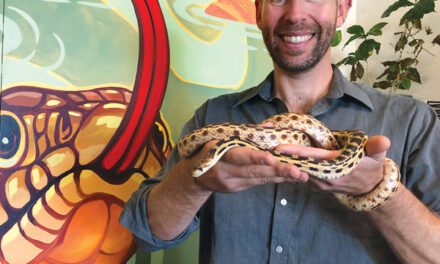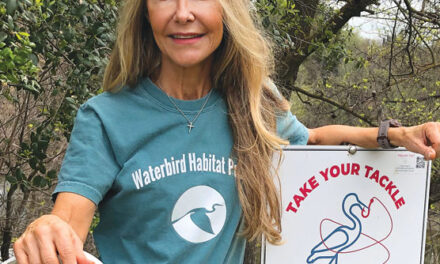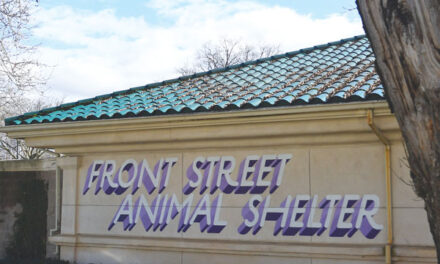More than 100,000 adoptable dogs and cats are killed in California animal shelters each year—second only to Texas.
California has made progress. In 1998, we destroyed a half million dogs and cats annually. That year, the Hayden Act established state policy that no adoptable or treatable dog or cat can be euthanized at an animal shelter.
The killing slowed, but didn’t stop. Breeding continues. Shelters are overwhelmed.
Recognizing that we’ve fallen short, Gov. Gavin Newsom allocated $50 million in the 2020-21 state budget to make California a “no-kill” state.

The funding was assigned to the UC Davis Koret Shelter Medicine Program. Under the name California for All Animals, the program allocates the state dollars to shelters through grants, consultations and staff training in “best practices.”
Among those practices is decreasing animal intake through “surrender-prevention programs.” Community members who find a stray dog or cat are encouraged to hold onto the animal and search for the owner. It’s called “community sheltering” or “finder fostering.”
“Finder fostering is when someone finds a lost animal and helps to reunite that animal with its owners before they take it to the shelter or call animal services for pickup,” says Amanda Newkirk with California for All Animals. “People have been turning to online community forums like Facebook and Nextdoor to help connect their neighbors with their lost pets.”
It’s easy to reunite a neighborhood dog or cat with the owner, especially if the animal has a collar and ID tag, or a registered microchip—determined by a quick trip to a veterinary office where the animal can be scanned at no charge.
But what about pets who have wondered far from home with no identification, not neutered, rabies vaccination status unknown?
Is it fair to ask the finder to house, feed and care for the animal until someone claims him or her? Will the pet get altered, vaccinated, treated for fleas, microchipped?
“UC Davis’ approach to shelter management hinges on the importance of keeping shelter populations low,” reports People for the Ethical Treatment of Animals. The fewer animals entering the shelter, the fewer are killed.
“The complete focus is on shelter management and adoption while ignoring the primary cause of shelter overcrowding and high euthanasia rates: companion animal overpopulation,” PETA states. “While this state money will undoubtedly improve conditions for animals lucky enough to gain shelter admission, it is likely to make things worse for those outside the shelters.”
In opposition to past efforts to implement community sheltering, a coalition of 20 public and private animal shelters and humane organizations, including Stockton, San Francisco, Napa and Los Angeles counties, spoke out.
“The goal should be to reduce intakes and euthanasia through humane education and by reducing procreation,” the coalition says. “The (community sheltering) approach appears to be to simply abandon these animals to their fate, thereby reducing euthanasia at animal shelters. This does not solve the problem; it merely pushes it out into the community for residents to struggle with.”
More emphasis must be on low-cost spay and neuter.
“One piece of the puzzle to achieving no-kill in shelters and their communities is the collective work in making spay/neuter accessible to all,” says Alina Hauptman with Best Friends Animal Society, which is collaborating with UC Davis.
But the nationwide veterinary shortage is not helping. At the Sacramento SPCA spay clinic—one of two high-volume, low-cost clinics in our area—the wait time from requesting an appointment to receiving a surgery date is three months.
“Another part of that issue is the lack of support staff,” says SSPCA CEO Kenn Altine. “We, at times, have had a shortage of registered veterinary technicians and, even more critically, veterinary assistants.”
The inability of people to get an appointment with their regular vet, coupled with sharp increases in cost of care, has resulted in more people trying to access the SSPCA’s low-cost services, “leading to higher demand and, as a result, longer wait times,” Altine says.
In the first round of the $50 million in state funding, Sacramento’s three main shelters—Front Street Animal Shelter, Bradshaw Animal Shelter and SSPCA—each received a “welcome grant” of $5,000. SSPCA received a second grant of $18,300 to upgrade kennels.
In the most recent grant cycle, nearly $10 million was allocated statewide to build capacity for spay/neuter. SSPCA was awarded $705,000. Front Street received $53,500.
Front Street Animal Shelter will use the funds for spay/neuter, vaccines and microchips for approximately 300 dogs and cats whose owners are experiencing homelessness, reports Phillip Zimmerman, Front Street’s animal care services manager.
Despite obstacles, if we’re ever to achieve a no-kill Sacramento, spay/neuter must be a priority.
Cathryn Rakich can be reached at crakich@surewest.net. Follow us on Facebook, Twitter and Instagram: @insidesacramento.















